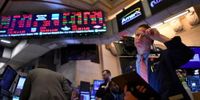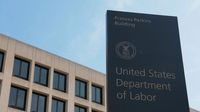The U.S. economy in September 2025 stands at a crossroads, with the bond market’s yield curve and the latest labor data flashing caution signals that have investors, policymakers, and workers alike wondering what comes next. After more than two years of historic yield curve inversion and a recent jobs report that fell far short of expectations, the conversation about recession risk and economic resilience is heating up once again.
For those unfamiliar, the yield curve is a simple but powerful chart that plots the interest rates the U.S. government pays to borrow money over different time frames, from three-month Treasury bills to thirty-year bonds. Under normal circumstances, this curve slopes upward—longer-term bonds pay higher yields than short-term ones, reflecting the greater risk of lending money for decades rather than months. But when that curve flattens, or worse, inverts (meaning short-term rates exceed long-term rates), history suggests it’s time to pay attention. According to InvestorPlace, every U.S. recession since 1960 has been preceded by a yield curve inversion—a track record that’s hard to ignore.
And here we are in 2025, with the yield curve making headlines once again. After enduring the longest inversion in U.S. history from 2022 through 2024, the curve has now steepened to multi-year highs. The 2-year Treasury yield sits about half a point below the 10-year, and the spread between the 3-month and 10-year is essentially flat. Some market watchers see this as a sign of renewed optimism, while others warn it could be the calm before the storm—echoes of the curve’s predictive power in 2006-2008 and 2019-2020, when inversions foreshadowed the financial crisis and the COVID-19 recession, respectively.
What’s driving these moves? The Federal Reserve’s recent policy pivot is a big factor. After aggressively hiking rates in 2022 and 2023 to combat inflation, the Fed has started modestly cutting rates, pulling short-term yields down. But long-term rates have risen, as investors demand more yield to compensate for future risks and as heavy Treasury issuance floods the market. This dynamic—short rates falling while long rates rise—creates what some call an “artificial” steepening of the curve. According to InvestorPlace, “That kind of steepening isn’t healthy. It’s artificial, it’s political—and while the Fed tries to ‘thread the needle,’ the free market pushes back.”
Meanwhile, the real economy is sending mixed signals. The August 2025 jobs report, as covered by Straight Arrow News, showed the U.S. added just 22,000 jobs—far short of the 76,000 forecasted by some economists. The unemployment rate ticked up from 4.2% to 4.3%. Even more telling, a downward revision to June’s numbers marked the first negative employment month since December 2020, effectively ending the second-longest expansion of employment in U.S. history.
“I’d say that we’re seeing kind of a flashing yellow here about the risk of a recession that essentially job growth has stalled over the past three months,” Erica Groshen, former commissioner of the Bureau of Labor Statistics (BLS), told Straight Arrow News. “We have very little job growth. And yeah, it’s worrisome. We’re not definitely heading into a recession, but this would be consistent with the beginning of one.”
The labor market’s malaise is further underscored by the July Job Openings and Labor Turnover Survey (JOLTS), which reported 7.18 million job openings but 7.24 million unemployed job seekers—the first time since 2021 that unemployed workers outnumber job openings. “It means the job market is slowing, the labor market [is] slowing,” said Alex Jacquez, chief of policy and advocacy at Groundwork Collaborative. “Businesses are not hiring. I think that is something they’ve been telling surveys. They have been saying on earnings calls that, particularly the economic environment right now, including the uncertainty that’s being driven by tariffs, is leading them to hold off on big investments in new facilities, big new hiring announcements.”
Despite the slowdown, there’s a twist: layoffs remain very low. Claudia Sahm, chief economist at New Century Advisers, explained, “In addition to the fact there aren’t as many job openings, firms aren’t doing as much hiring. But the rate at which they’re laying people off is very low. So, we have this moment where if you’ve got a job, you’re probably in a pretty good place. You’re not necessarily getting big raises; you’re not necessarily being able to switch to other jobs to get a raise. So, it’s not a great labor market, but if you’ve got a job, this is pretty good.”
However, for those seeking new opportunities, the environment is tough. The combination of economic uncertainty—driven by tariffs, shifting immigration policies, and federal government curtailment—has made businesses cautious about hiring. “We are just not seeing a ton of workers being added to payrolls,” Jacquez noted. “And at the same time, workers are not quitting. They are not being fired.”
The slowdown in immigration is also playing a role. Data shows that 1.2 million immigrants left the U.S. workforce between January and July 2025. Sahm highlighted, “From like 2023 up until the middle of last year, we had a big surge in immigration into the country. And since the middle of last year, immigration has slowed dramatically and that has a huge effect on the workers that we have. Many that come in the country, they have higher participation rates in the labor force than U.S.-born individuals.”
Against this backdrop, the Federal Reserve’s next moves are being watched with intense scrutiny. InvestorPlace’s Jonathan Rose predicts, “The Fed is 100% going to cut in September. That’s going to drag short-term yields lower. But here’s the kicker: the long end could actually rise at the same time.” This scenario, where short-term rates fall but long-term rates climb, could further complicate the economic outlook by raising borrowing costs for mortgages and corporate debt just as the Fed tries to stimulate growth.
Historically, a supportive steep yield curve has fueled bull markets, as seen from 2009 through 2019 when low short-term rates and higher long-term rates gave businesses and consumers cheap access to credit. But a policy-driven steepening, where the Fed cuts rates but the market pushes long-term yields higher, is often a sign of stress rather than strength. As Rose warns, “A truly supportive steep curve gives markets room to run. A policy-driven steepening does the opposite.”
For American workers, the advice from experts is to be cautious but not panicked. “The typical American worker around a recession decides that they’re not going to quit a job that they have with the anticipation that they will be able to get another job,” Groshen said. “So, you’re much more likely to see quit activity go way down. You are likely to see workers then accept lower pay raises than they might have otherwise.”
In this environment, uncertainty breeds volatility, and both investors and workers are wise to keep a close eye on the signals coming from the bond market and the labor data. The yield curve, once an obscure chart for bond traders, has become a public barometer of economic risk. As history has shown, it’s a story that can’t be ignored.

